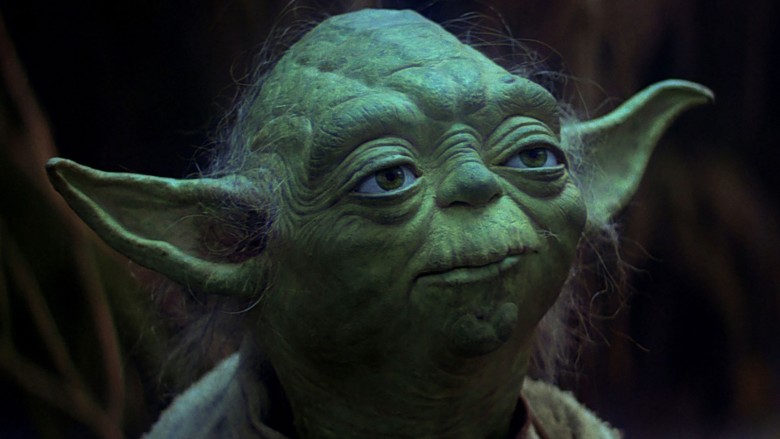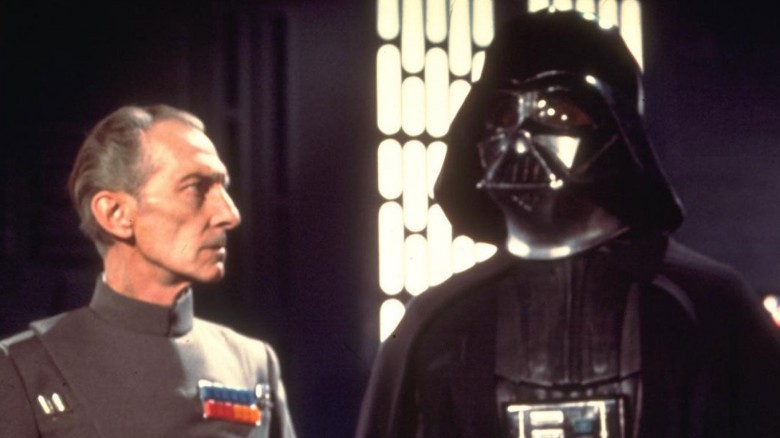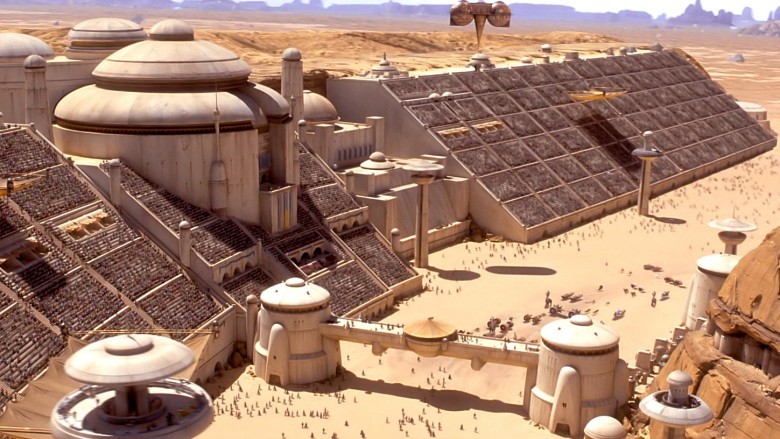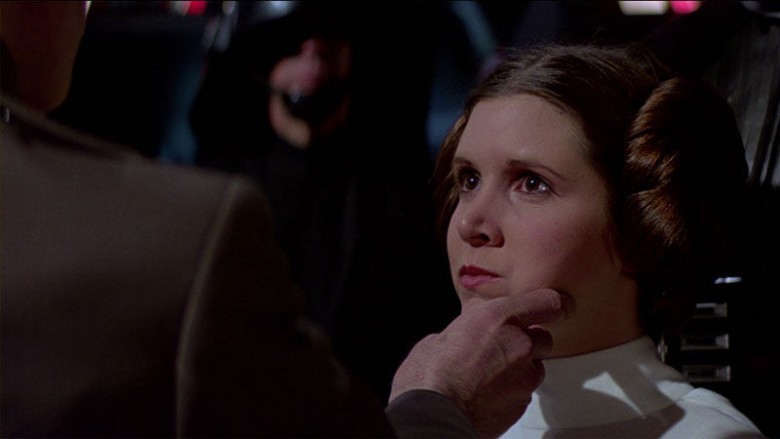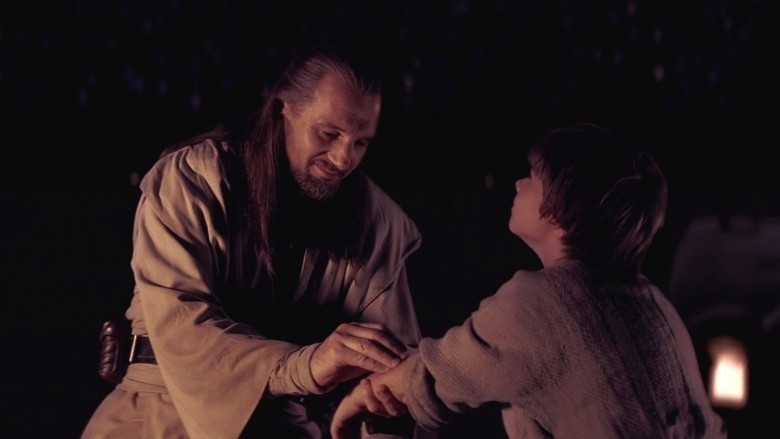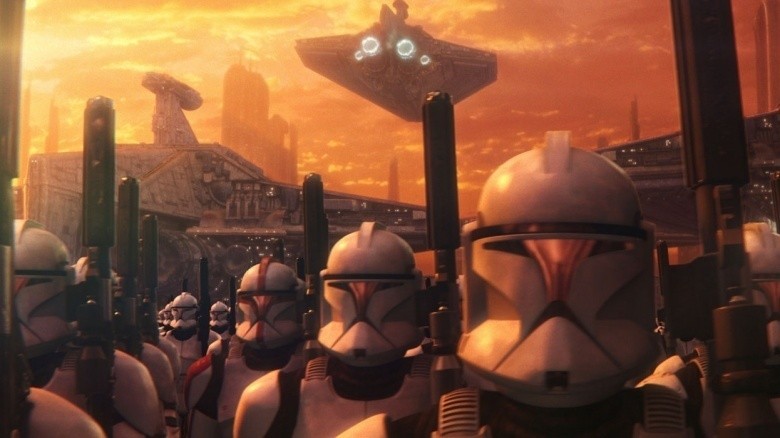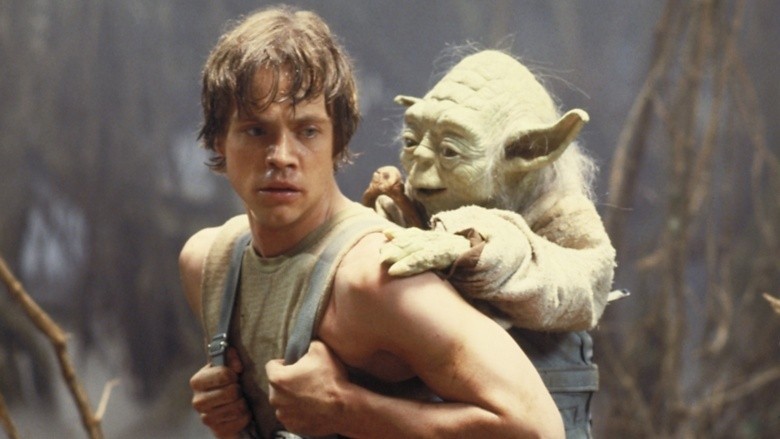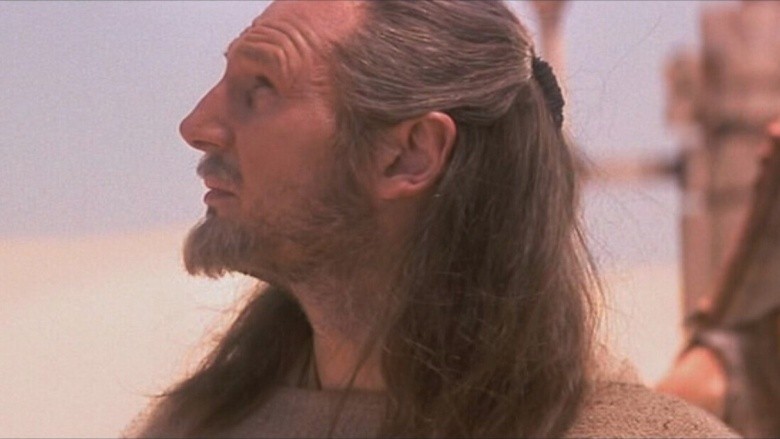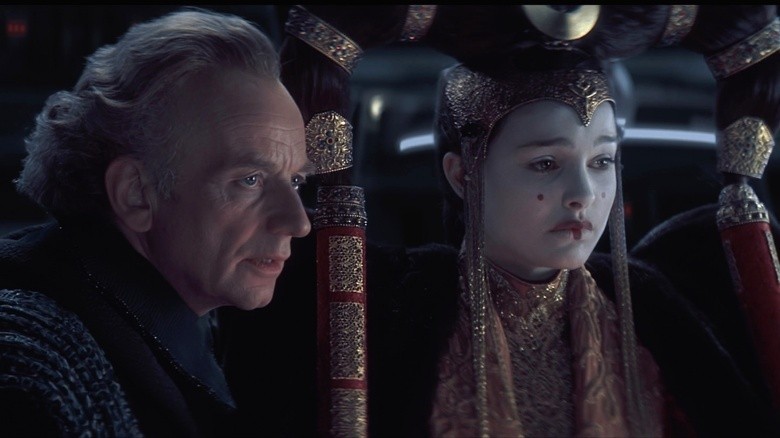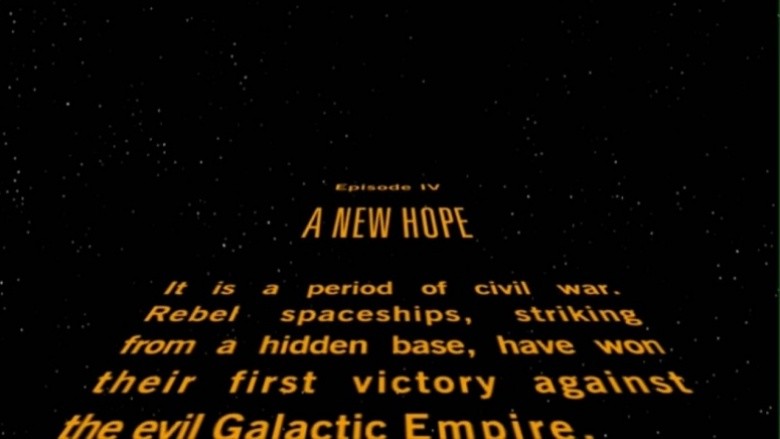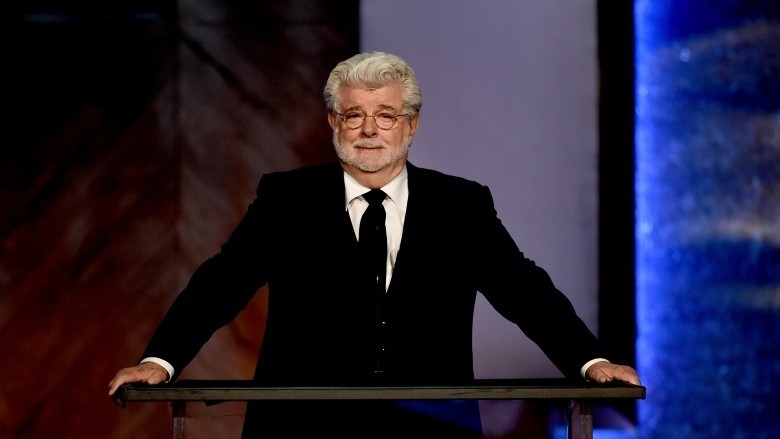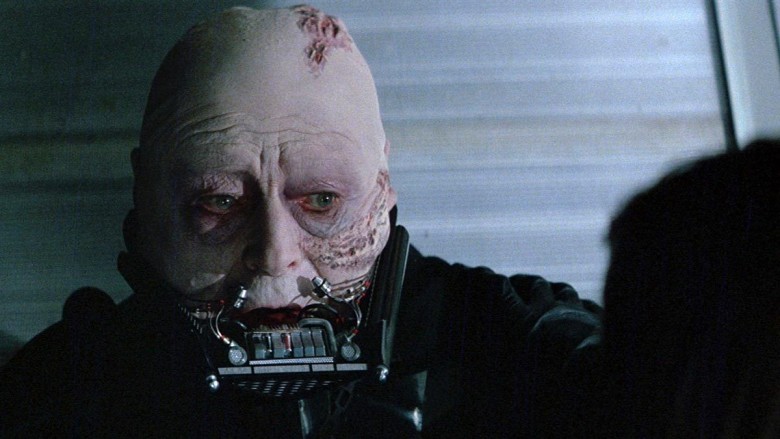Things You Still Don't Understand About Star Wars
Star Wars is one of the most successful multimedia franchises in history—and now that Disney's steering the ship, it shows absolutely no signs of stopping. Yet even after all those movies, books, comics, games, and TV shows, there remain some substantial misconceptions about the saga George Lucas dreamed up long, long ago about a galaxy far, far away. Chances are you might believe a few of them yourself, but don't worry: we've rounded up the most common, and we're debunking them for you right here. Read on, Padawan!
Vader wasn't always meant to be the ultimate evil badass
There is perhaps nothing more iconic about Star Wars than Darth Vader. In a world of glowing lightsabers and dazzling spaceships, the most iconic image remains the man behind the iron mask and mysterious black suit. Everyone remembers Vader at the height of his powers, choking to death Admirals who piss him off and going toe-to-toe in a lightsaber fight against the wise and powerful Obi-Wan Kenobi. Because of this, everyone assumes that Vader was always meant to be this iconic character, the Big Bad of the Star Wars universe.
Looking back, though, it's pretty clear Vader was more or less a henchman in the original movie. Oh, he had his badass moments, lifting Rebels up and choking them out with one hand, plus he's definitely not afraid to choke out Admiral Motti. Look back at that scene, though — Vader stops choking Motti as soon as Grand Moff Tarkin tells him to. Leia's accusation that Tarkin is holding Vader's leash, and that the Dark Lord of the Sith is more akin to Tarkin's attack dog seems awfully accurate.
Vader is apparently the guy who has to process the paperwork when Tarkin orders Leia terminated (keep in mind she was merely scheduled to be executed—Vader was a paper pusher). And, of course, Vader risks his own life to fight the Rebel Starfighters at the end. It doesn't make much sense for a major leader of the Empire, second only to the Emperor, to put himself in a position where a stray laser bolt could immediately kill him. It does make sense for Tarkin's enforcer to do that, though, getting his hands dirty while Tarkin gives the orders from relative safety.
Still don't believe it? Check this out: when George Lucas was plotting Splinter of the Mind's Eye, a low-budget sequel to Star Wars, with author Alan Dean Foster, he admitted to Foster that he thought Vader wasn't a strong villain at all! And this isn't just Lucas being his usual wrong self — at the time, Vader simply wasn't strong.
Tatooine isn't remote or unimportant
Audiences see Star Wars through the eyes of Luke Skywalker, which unfortunately means our perceptions are limited by Luke's biases. For instance, like most young people stuck with the people who raised them, Luke hates where he lives. He describes Tatooine as being the "planet farthest from" any kind of "bright center to the universe," and constantly pesters his Uncle Owen to let him enter the Academy, so as to eventually leave the planet. Because of all this, viewers get the idea that Tatooine is remote and unimportant. However, there's plenty of evidence that this is flat-out wrong.
Canonically, Luke lives in the boondocks on a farm. However, Tatooine seems filled with cities like Mos Eisley and Mos Espa, both full of life and commerce. The very presence of smugglers like Han Solo and the other denizens of the Cantina means there's plenty of business (both legal and otherwise) for them to procure on the planet. Then there's Phantom Menace, which made it apparent that Tatooine hosts numerous events sponsored by influential beings like Jabba the Hutt — including major podraces — that seem to attract tourists and participants from all over the galaxy.
Why, then, do other characters sometimes comment on how remote Tatooine is? Consider the source, as these are usually Republic characters who view anything outside of their boundaries (and, therefore, outside their control) as far away and unimportant, despite all the apparent tourism and commerce happening.
Carrie Fisher's English accent wasn't a mistake
The late, great Carrie Fisher became an acting heavyweight in her own right. When Star Wars was first filming, though, she was young and inexperienced, and possibly prone to some weird mistakes. One of these alleged mistakes that fans have joked about for decades, is that her character suddenly takes on an inexplicable British accent when she is talking to Peter Cushing. Fan argued if she was simply overwhelmed by the veteran actor's presence, or simply thought that using an English accent would up her game in those scenes. A later (canon) Star Wars novel, though, provided a much simpler explanation: Leia was mocking Grand Moff Tarkin.
In the 2016 Star Wars novel Bloodline, author Claudia Gray writes a scene in which Leia looks back on her interactions with Tarkin, and remembers using that accent to mock the Moff. As retcons go, this is fairly organic, as that scene involved Leia telling Tarkin that she should have recognized his "foul stench" sooner, and also accused him of holding "Vader's leash." The feisty young princess certainly does seem like she's trying to get a rise out of the seasoned Imperial officer, and the idea that she was throwing a pretentious accent in his face is simply the icing on that particular bit of cake.
Midichlorians aren't an exact science
There are fewer more controversial aspects of the Star Wars prequels than midichlorians. The original trilogy presented the Force as a mysterious and mystical energy field. Having access to the Force felt much more like an indicator that characters were specially chosen by this Force, which is fitting with the deliberately medieval fantasy nature of Star Wars. It is, after all, a franchise that began with a chosen one getting access to a magical sword and being taught by a wizard so he can storm a castle, save a princess, and defeat an evil knight.
However, Phantom Menace presented the Force as something that could be measured by testing someone's blood, or midichlorians, leading many outraged fans to think that the mystical Force had been replaced by something mundane and scientific. That's not really true, though, and part of the evidence for this can be seen in the fact that midichlorians are not mentioned much in later movies. Prequel characters don't use the presence of midichlorians intelligently, either. If it can be found by scanning blood, wouldn't the entire Senate be regularly scanned, especially after Dooku mentions that the Senate is being manipulated by a Dark Lord of the Sith? Palpatine should have been busted years before he took over.
So what happened? The likeliest answer is that Lucas backed off from the concept after fan backlash. However, Lucas himself offered an interesting idea in a podcast, responding to a question about midichlorians with the answer, "Well, maybe Qui-Gon was wrong." This makes it seem like Qui-Gon had a fringe theory about the Force, which is actually much more in line with the character as a weird, Council-defying maverick.
Stormtroopers aren't clones
This myth is interesting because it involves the original trilogy, was begun by the prequel trilogy, and then was definitively debunked by the novels surrounding the release of The Force Awakens. The myth is pretty simple, with people believing that the Stormtroopers they see in the original trilogy must be the clones they see in the prequels, albeit with slightly modified armor.
For nitpicky viewers, the evidence was always there that the Stormtroopers they know and love are not clones. For one, the Stormtroopers don't sound like Jango Fett, and while that is understandable in the original releases of the movies, Lucas has since released different versions to make Boba Fett sound like Jango Fett. He did not, however, make the Stormtroopers sound like Jango. It's also plain that the new Stormtroopers are not as disciplined as clones, as Obi-Wan sneaks by two that are having an in-depth conversation about a new speeder and not paying much attention even before he uses the Force.
All this circumstantial evidence was made concrete with the release of A New Dawn, the first novel that was officially canon after Force Awakens erased the old Extended Universe. The novel casually mentions female Stormtroopers, confirming that by this time, the Empire is recruiting regular, non-clone humans to make up for the clones they've lost.
Luke's training isn't actually complete
This is a false fact that is provided by the Jedi master Yoda himself. After Luke leaves Dagobah to save his friends in Empire Strikes Back and has continued misadventures at the beginning of Return of Jedi, he belatedly returns to Yoda. However, Yoda is at death's door and tells Luke that his training is complete and his final exam is to go confront Darth Vader. Naturally, audiences are cued to believe what Yoda says and walk away from Return of the Jedi thinking that Luke's Jedi training is over.
It's important to remember, though, that Yoda, like Obi-Wan before him, can be a bit flexible about the truth, starting with his very first meeting with Luke in which he impersonated a crazy local. And the idea that Luke has actually completed his Jedi training seems to be one of those major truth-bending moments. To see why, viewers must think about the extent of Luke's training. He has what amounts to a long weekend with Obi-Wan Kenobi in A New Hope, then he spends about a week or two balancing rocks with Yoda, and then he leaves. It's important to remember that Luke leaves almost as soon as Han and Leia reach Cloud City, and even without a working hyperdrive, it doesn't take that long to reach that nearby system.
To compare, think about the "younglings" seen in Attack of the Clones. They receive seemingly daily training from a very young age, then have an intern-like experience as padawans for years. Only after years and years do they become a Jedi. Compared to this, Luke is the fifth-year senior who skipped all his classes every year and showed up late to the final exam but is convinced he'll pass every subject and graduate.
Qui-Gon isn't a wise Jedi mentor
Here is a misconception that can be blamed partially on the script and partially on the too-good-to-be-in-this-movie performance from Liam Neeson. Many people walk away from The Phantom Menace thinking that Qui-Gon is a wise Jedi and mentor. After all, he is presented as playing the older Obi-Wan role to a young and more impetuous Obi-Wan Kenobi as well as younger Anakin Skywalker. However, the truth is that he's a dangerous and reckless Jedi master and mentor.
The list really does go on. At the beginning of The Phantom Menace, he says he doesn't sense anything is wrong ... minutes before an attempt on their lives and an entire planetary invasion. On the planet, he thinks he has successfully mind-tricked Boss Nass, but the alien ends up playing Qui-Gon by telling him to go through the dangerous planetary core. When they land on Tattooine, he assumes having Republic credits means they cannot pay for anything, but in a planet full of Han Solo-like smugglers and Boba Fett-like bounty hunters, surely someone out there would do a credit exchange with Qui-Gon? When he realizes Watto has the part he needs, he uses some Jedi manipulation to gamble for Anakin's freedom.
However, if his morality is already flexible, why not steal the part and not risk a child's life in a dangerous race that has killers like Sebulba in it? Why not free Anakin's mother? Even if they can't take her with them, they can bring her somewhere where she isn't a slave. Back on Naboo, Qui-Gon doesn't hesitate to bring Anakin into a firefight where he could get killed. Ultimately, Qui-Gonn makes a series of terrible decisions — they are so bad, in fact, some have theorized he is secretly a Sith.
The Empire isn't unequivocally evil
The central conceit of the entire original trilogy is that the Empire is evil. If this isn't true, then the heroes are cast in a darker light. In point of fact, they are literally terrorists: a bunch of guerilla insurgents operating in scattered cells and doing hit-and-run attacks against the legitimate government. Unfortunately for the Rebellion, though, there is ample evidence that the Empire isn't really that evil at all.
First, it's important to establish that there is no way that the Rebellion is not killing innocent people. As Clerks famously joked about, their willingness to destroy a Death Star that was still under construction showed a willingness to destroy countless contractors and construction workers on the project: civilians who probably never held a blaster. How many other civilians have they killed over the years? For those caught in the crossfire, the Empire protects them from regular attacks by dangerous terrorists.
Also, Palpatine makes it a priority to hunt down Jedi. The movies present this idea that the Light Side is good and that the Dark Side is bad, and audiences accept this as true. However, viewers can regularly see Jedi manipulating people, telling lies, and generally ruling the galaxy based on their religious beliefs. Imagine if Earth was dominated by religious extremists with laser swords, and suddenly Palpatine's decision to free the galaxy from their manipulations and tyranny makes a lot more sense!
Lucas didn't write the New Hope opening crawl
The opening crawl of Star Wars has become an icon in its own right. Now, George Lucas did not invent the idea of such a crawl — this technique was created by the directors of the 1940's serial Flash Gordon Conquers the Universe. The idea was that viewers might have missed previous installments, or simply forgotten what happened, so the crawl helped bring everyone up to speed.
However, while Lucas clearly didn't invent the crawl, most assume that he wrote them. After all, he's listed as the writer and director of the first Star Wars movie, right? Yes, but that doesn't mean what you see are his words. Lucas did take a crack at writing a crawl, but his first, long, rambling, nonsensical attempt revealed the same problem that the prequels would later expose: Lucas doesn't always realize that less is more.
Fortunately, he showed an early screening of the movie to some of his friends, including veteran director Brian de Palma, who reportedly described the original crawl as something that "didn't make any sense at all." Afterwards, de Palma helped rewrite it into the light and punchy crawl that fans fell in love, and the rest is Star Wars history.
George Lucas isn't why Star Wars is successful
The biggest Star Wars assumption is also the most basic: that George Lucas is the main reason that Star Wars is successful. It was his idea, he was the writer and director of A New Hope ... he has to be the main reason everything succeeded, right?
Wrong. It turns out that, as the prequels indicated, Star Wars is something that often succeeded despite Lucas rather than because of him. The first film was very much a movie saved in editing, and not by George Lucas. His wife, Marcia Lucas, helped edit and transform A New Hope into a movie filled with both the gravitas and triumph that fans love, from the death of Obi-Wan to the return of Han Solo. That famous Star Wars soundtrack? Lucas wanted it to be classical music, like with 2001: A Space Odyssey. John Williams went in the memorable (and completely opposite) direction with the unforgettable score. For The Empire Strikes Back, largely regarded as the best Star Wars movie, director Irvin Kirshner and writer Lawrence Kasdan overrode Lucas on much of the story. For example, Lucas wanted an action-filled movie with silly touches like wampas attacking the base and little romance in the movie. The writer and director said no, providing a slower movie filled with characterization, romance, and mythic plot development.
Overall, it took a village to create Star Wars. It took George Lucas to fill it with Ewoks.
The unmasked Vader in Return of the Jedi wasn't the man in the suit all along
One of the most touching moments in Return of the Jedi comes after Luke has successfully redeemed his father to the Light Side of the Force. Darth Vader, knowing he's dying, wants to look at Luke with his "own eyes," and requests his son's help in removing his iconic mask. Not only is it a powerful moment of bonding between father and son, but it was a powerful moment for audiences everywhere, as they finally got to see the face of the man who had been inside Darth Vader's suit this whole time.
However, the truth is, this was an entirely different man altogether! The man behind the suit in the Original trilogy was David Prowse, a tall bodybuilder who absolutely looked like a "Vader." However, when it came time to reveal the Sith Lord's face, Prowse got snubbed in the we-like-your-face department. George Lucas chose to hire someone else to be the face, namely veteran actor Sebastian Shaw, to portray the older Anakin Skywalker, both as the dying Sith Warrior and the blue Force Ghost who shows up at the end. We're not sure why Lucas went to all that trouble to cast someone else for what amounted to 75 seconds of face time and 24 words, but then again, we didn't create Jar-Jar, so what do we know?
